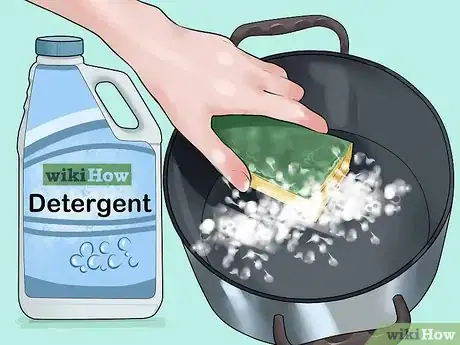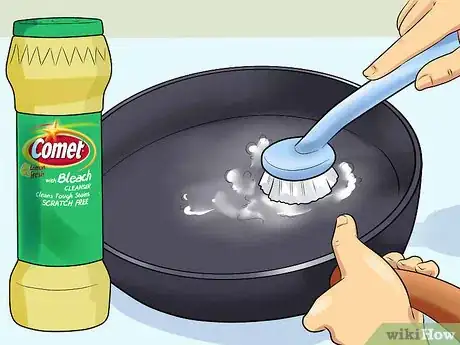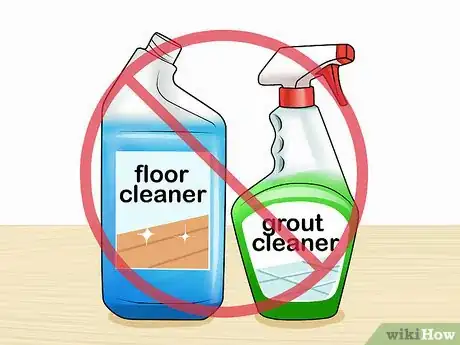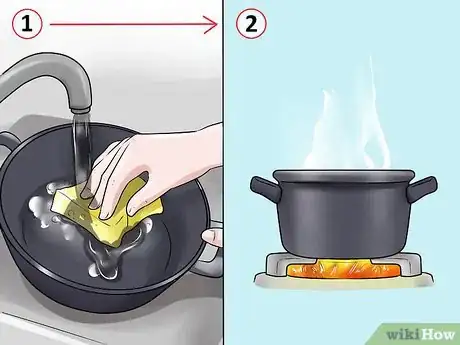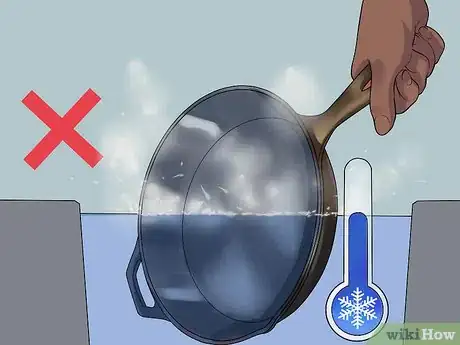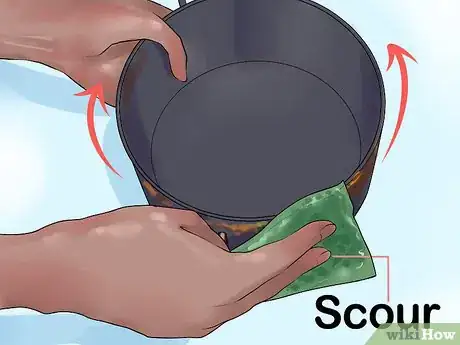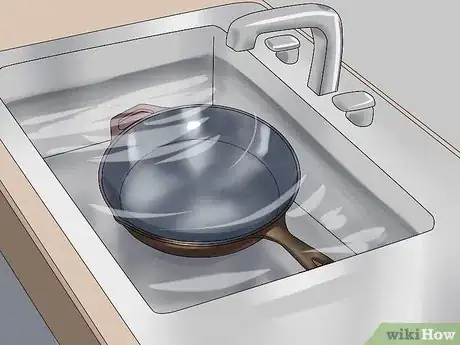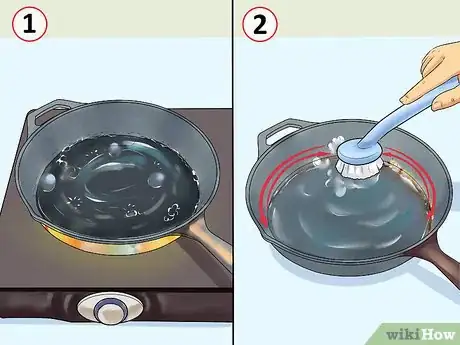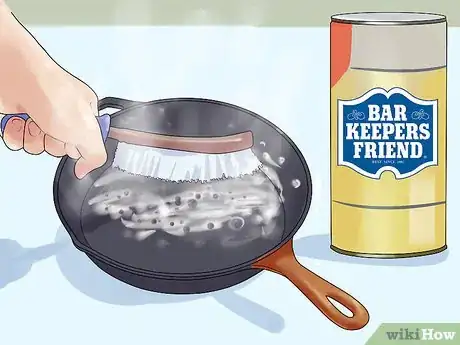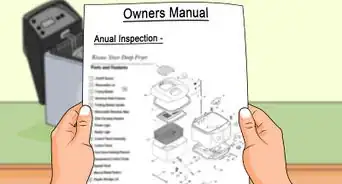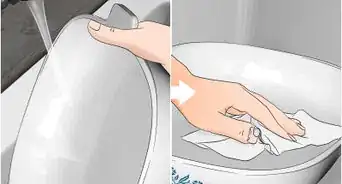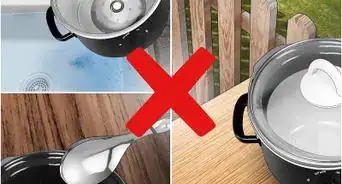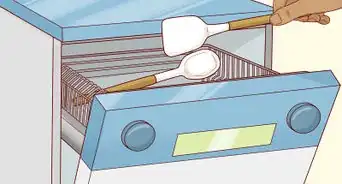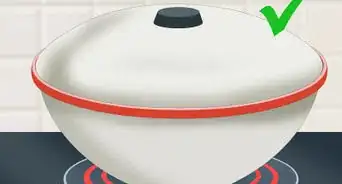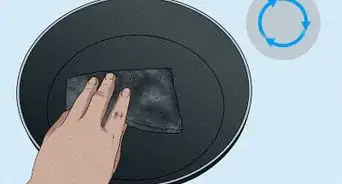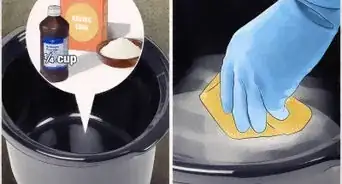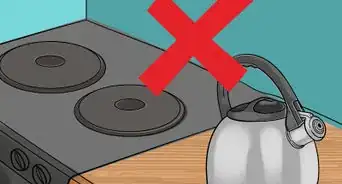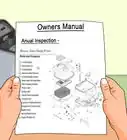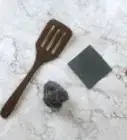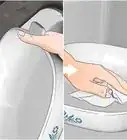This article was co-authored by Alessandra Mendes. Alessandra Mendes is a Cleaning Specialist and the Founder of Cleaning Glow. With ten years of experience, Alessandra and her team specialize in providing residential cleaning services in the San Francisco Bay Area. All members of the Cleaning Glow team have completed thorough background checks.
There are 7 references cited in this article, which can be found at the bottom of the page.
This article has been viewed 43,367 times.
Thanks to the anodizing process, anodized cookware is durable and distributes heat evenly when you cook. To maintain its excellent cooking properties, it’s important to clean your anodized cookware properly. This means washing it by hand with appropriate, non-abrasive cleansers.
Steps
Using the Right Cleaners
-
1Clean your cookware with detergent. Use a powerful dishwashing detergent to clean your anodized cookware. You can also use more mild detergents. Avoid using baking soda or any other alkaline-based cleaning products on the inside of your anodized cookware.[1]
-
2Use gentle scrubbers. Clean your cookware with mild scouring powders, like Barkeeper’s Friend, Ajax, or Comet. Scrub with non-abrasive sponges, scrubby sponges, soft-bristled cleaning brushes, dish cloths or rags. Avoid using steel wool and only use abrasive scrubbing pads sparingly.Advertisement
-
3Don’t use cleaning solutions that aren’t intended for cookware. Never use oven cleaner or other caustic cleaning agents on your cookware. Also avoid any liquid household cleaners. This includes floor cleaners, silver polish, grout cleaner, or porcelain cleaner. Don’t clean your anodized cookware with bleach.
Washing Your Cookware
-
1Wash your cookware before you use it. When you first get your cookware, treat it like you would any other cookware. Wash it in warm water with a mild dish soap. Rinse it thoroughly and dry it completely. Season your cookware with oil to help prevent food from sticking to it.[2]
-
2Prevent warping while washing your pans. Never immerse hot cookware in cold water. Rather, allow your pans to cool completely before washing. Cold water can warp a hot pan.[3]
- This is only relevant for hot pans and cold water. Putting hot pans in hot water or cold pans in hot water will not warp your cookware.
-
3Wash with soap and hot water. Wash your cookware by hand. Use a mild dish washing liquid and hot or warm water. Clean your cookware as soon as possible after using it. This will help maintain it and make washing it easier.[4]
Removing Stains and Burnt Residue
-
1Scour the outside of your cookware. If you have stains or burns on the outside of your cookware, you can use a scouring agent to clean them. Mix baking soda or a mild scouring powder with a little water to make a paste. Rub the paste on the stains with a dishcloth or soft-bristled cleaning brush and rinse with warm water.[5]
-
2Soak your pots and pans. To remove stains or burnt residue from the inside of your cookware, soak it with hot water and soap. Pour out most of the soap and water, then use a dishcloth, gentle scrubbing pad, or soft-bristled cleaning brush to scrub at the stain or burnt food residue. Rinse well.[6]
- Never put your anodized cookware in the dishwasher. Putting your pan in the dishwasher might discolor or scratch your cookware and in many cases will also void your warranty.
-
3Simmer dish soap in the pan to remove very stubborn stains and residue. Fill up the piece of cookware with water and add some dishwashing liquid. Simmer this for about 20 minutes. Give it at least 30 minutes to cool. Remove the residue or stain with a gentle scrubbing pad or soft-bristled cleaning brush. Rinse thoroughly.[7]
-
4Finish with a gentle scouring powder. Scour the stain with a gentle scouring powder like Barkeeper’s Friend and hot water. Use a gentle scrubbing pad or soft-bristled cleaning brush. Rinse out all of the scouring powder.
Community Q&A
-
QuestionHow do you remove water spots inside anodized cookware?
 Community AnswerScrub the surface with a mixture of lemon juice and baking soda then wash thoroughly and let dry.
Community AnswerScrub the surface with a mixture of lemon juice and baking soda then wash thoroughly and let dry.
References
- ↑ http://jezebel.com/how-to-clean-scorched-pots-and-befouled-ovens-1443087464
- ↑ http://www.nytimes.com/1988/04/27/garden/new-cooking-surface-light-anodized-aluminum.html
- ↑ https://thecookingdish.com/0227/the-top-10-rules-when-using-nonstick-pans/
- ↑ https://www.fix.com/blog/comparison-of-cookware-materials/
- ↑ https://www.houzz.com/ideabooks/17691332/list/how-to-clean-your-cookware-so-it-lasts
- ↑ https://www.babble.com/home/pots-and-pans-cleaning-guide/
- ↑ http://www.thekitchn.com/kitchen-nightmares-cleaning-sc-57322
